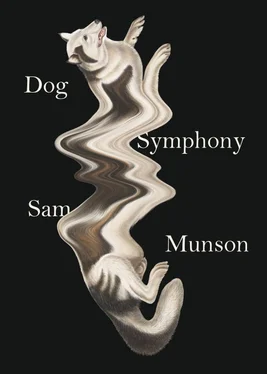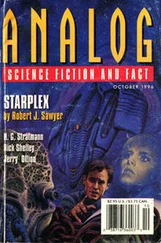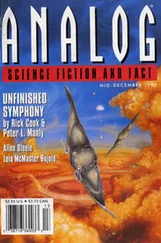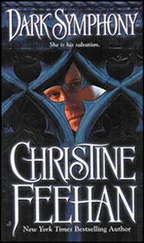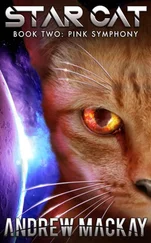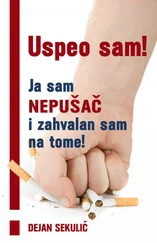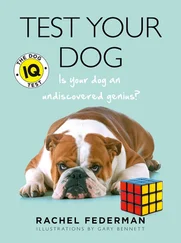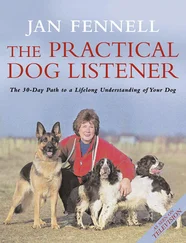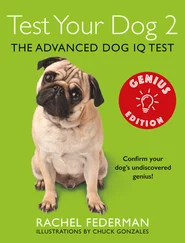The pack of seven did not follow any apparent system in choosing which bowls to eat and drink from. The subalterns broke ranks before visiting a bowl and rejoined them after they had finished. At Nazca, I — or rather, we — encountered another, much larger pack. Twenty-eight or twenty-nine dogs at least, all proceeding in the same ministerial silence and equanimity. The wedge was absorbed and assimilated by this larger pack. My innate suspicion of dogs hindered me here. The sheer number pacing along Nazca, the absence of human authorities — all in all it looked like a murky situation, one I did not want to plunge more deeply into, except I did, I did, some yellowed nullity or something like that drove me on to Nazca, among the gathering dogs. All sizes and breeds, they walked or cantered, each dog might itself have been alone, and I might have been alone, except for the stale canine smell that tainted the air above Nazca and above Juan B. Justo, where the number of dogs swelled, by my quick, awed count, into the hundreds without any of the violent sporting common when dogs meet.
No, these dogs trotted with their eyes on the sidewalks, their black eyes or their blue eyes, and I moved among them, keeping to the sidewalk when I could. Sometimes the mass and volume of the dogs forced me to move all the way into the middle of the street, where I walked along the leprous and human lines of paint on the asphalt. The stale smell grew stronger and stronger, it’s true, but the night kept on accommodating it, as it accommodated the baleful light from the streetlamps — as well as my own visions of Ana asleep alone. At Condarco, I stumbled over a curb and stepped on the left forepaw of a golden retriever. The dog whined but did not spare me another glance. My terror receded. Gavilán disgorged six identical British bulldogs in identical steel-studded collars, a truly ministerial sight. We reached Donato Álvarez and the stream of dogs from Justo expanded into a river. Turbid and slow, to extend the metaphor, although a river made up entirely of dogs is nonsensical. The only physical phenomenon it bore any resemblance to was a colloidal suspension. Or better still, blood cells in a vein, discrete entities in an environment, phenomena bathed in concepts. That’s what filled Donato Álvarez, northwest and southeast, the dual prospect writhing, mighty, indisputable.
Our apparent destination: Chacarita. I knew nothing about that barrio, beyond the name and precise location of all the streets it contained, and that it was once a collection of small farms owned by the Jesuits, and that it took its name from the mightiest and most perfect cemetery in the city (or vice versa). Between Diáz and Cervantes (not named after the author of the Quixote but another Cervantes) we passed a huge, salmon-pink apartment block set back from the street by a clean, fenced, curving driveway. At either end of this driveway, metal-roofed shelters — guard booths, both filled with yellow light — gleamed above the meat and water bowls. The northwestern bowl filled with fresh meat and the southeastern with rotting meat. The dogs preferred the fresher bowl, soon emptying it. They ignored the rotten meat, contrary to what I knew about the nature of dogs. Like human nature, dog nature will approve the consumption of any filth as long as it is present.
The private homes on this block and the next all had wooden shrines out front, carved with motionless leaves and looking as though the same hands had built them. At the apex of a small green triangle jutting out into the intersection where Donato Álvarez met García and Espinosa, the dogs formed a semiorderly knot around a cupola in which an uncertain light flickered. A crimson glass hurricane lamp.
I thought it likely that the dogs, after reaching Warnes, would head over to Newbery and then turn onto Guzmán to reach the main cemetery entrance with its mighty colonnade shining (as they say) in the moonlight, in the metaphorical moonlight. I’d never seen the entrance, but I knew it from the photos in my atlases and city guidebooks. I knew the layout with such precision that I could mentally count the involutes in the shadow cast by the iron cemetery gate. Warnes spread before us, and the press of dogs, their strong smell — mingled now with a harsher odor rising from the ramifying rivulets of dog piss — grew closer, more adherent. The body shops and auto-parts stores lining the blocks of Warnes between Trelles and Oroño proffered the richest meat-bowl displays yet, displays truly commensurate with a rigorous commercial life. Light-streaked chrome bulged behind windows under awnings made of the pollen-yellow canvas that auto-parts stores favor around the world. Grimy steel security lattices screened the doors of these shops, and the bowl shrines before them put the other ones I had seen to shame. The store owners made use of the local elements, i.e., hubcaps, raw sheet-metal plaques for spot welding, and mirror fragments. You could tell owners had made these shrines. The care visible in their construction proved they were not the work of mere lackeys. The mightiest shrine dominated the intersection of Warnes and Dickman, a ziggurat walled with corrugated iron shingling and encircled, netted, in fine-linked drive chains of galvanized steel. The mild wind moaned as it passed through this structure, and I stopped walking in order to listen, though my companions just went on trooping, increasing their numbers, went on flowing. From the ziggurat roof a hood ornament, quite new and greasy, protruded. A naked young woman bent backward by ecstasy, by the wind. No nipples, no genitals, smooth thighs and smooth eyes.
There were no cars on Warnes, and the railway tracks between the street and the southern wall of the cemetery threw off implacable gleams. Toward these implacable gleams, across the asphalt and then the tracks, the dogs trooped without fear. Not toward the entrance on Guzmán. No, they headed instead for a point in the cemetery’s outer wall directly across Warnes from Almirante Seguí, Francisco José, another naval mastermind, I thought — his face, surmounted by an absurd Napoleonic curl, appeared in the city atlas I’d studied before coming. Around this inexplicable point their congregation was thickest and most active, nails scraping runnels, for example, in the narrow strip of bare earth between the cemetery and tracks, bare earth also occupied in absorbing urine and slaver.
The wall itself, I saw, that was their aim. The wall that (in the stupidest way possible) separates the living from the dead. No burgher can resist a cemetery wall, so I pressed forward among the knee-high and supernally polite masses. Their pelts stroked my shins. At times a tongue brushed me, or even a tooth, with no intent. I reached the bare verge and struck with my toes a dull, hard blow against a rail hiding itself in the canine darkness before the dogs’ true goal became apparent. Their polite writhing expressed a single purpose: to struggle through a break in the cemetery wall shaped like an onion dome. ( Lukovichnaya glava to my namesake, though in my profession the phrase means “toilet bowl.”) Here, any observer would expect their calm to erupt, here — here and nowhere else would they reveal their true nature. Yet sedate motion reigned, the diffuse, sickly light from the streetlamps flowed peaceably on, and the silence did not suffer. Not at all.
The lawns beyond the wall looked almost black in the moonlight. The stone monuments gave off a gentle and mycoform effulgence. Every time I tried to get through this gap — the sweet, wide, and somber lawns of the cemetery were calling me onward — I failed. The dogs congregated too thickly. While they had so far ignored me, I did not want to offend or provoke them. So I gave up, that’s all. I crossed the bare verge now moistened by urine; I crossed the train tracks now thrumming, mildly thrumming; I followed the cemetery wall along Warnes and turned on Newbery, where a massive bank of sycamore screened both the cemetery and its brown wall from view. I planned to pass through the mighty colonnade, to climb over the iron gate if necessary. Those involutes twisted and swayed in the night, and I would climb them, I would ascend. To what? To the cemetery. If it is permissible to say “ascend to the cemetery.” It seemed an ideal place to spend the night, walled and containing only the dead and these calm dogs. My absorption in the night-dog phenomenon meant I had not yet found an open hotel or flophouse. I did not know what the penal statutes dealing with cemetery trespass demanded in Buenos Aires. In my most recent survey of their crime statistics I had not found one mention of cemetery trespass, and the statutes governing it had evaded my research.
Читать дальше
